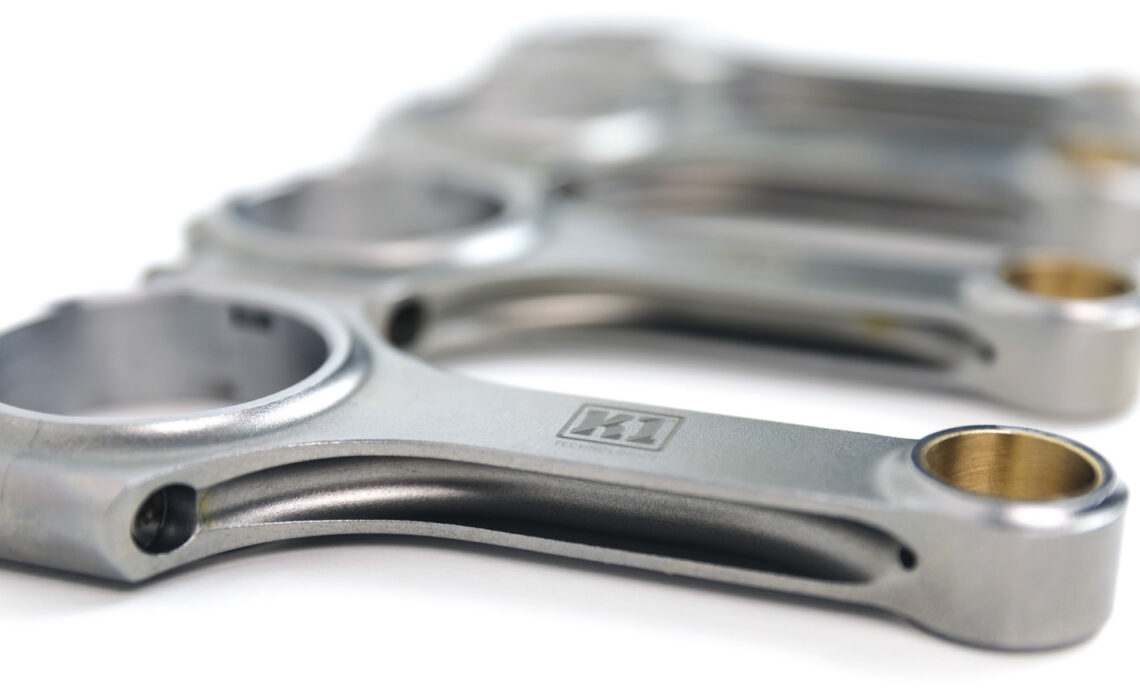Whether your next engine build is mild or wild, connecting rod bolts or studs at the crankshaft are among the most important fasteners within your engine. K1 Technologies recommends multiple ways to tighten your rod bolts properly, and the sole use of a torque wrench is low on the list.
The connecting rods must transfer a piston traveling “up and down” to the rotating motion to feed the drivetrain. Each rotation has high forces from all angles on the rod cap. The clamping load of the fasteners at top dead center (TDC) is the most demanding. This inertial stress occurs as the piston transfers from an upward motion to a downward one.
The Rod Bolt Stretch Gauge
First, you record each rod bolt length before tightening. You then monitor the stretch as you tighten and follow the recommended stretch length within your K1 rod instructions. Tightening your rod fasteners by monitoring stretch is the top recommendation by K1.
A rod bolt stretch gauge is not a tool exclusive to high-end engine builders. Each K1 Technologies connecting rod uses ARP 2000 fasteners, which have dimples on each end of the fastener to locate the gauge on the fastener for repeatable measurements.
“The stretch method for tightening rod bolts is recommended regardless of the bolt’s material or fastener material,” says Michael Skeen, Technical Sales Representative at K1 Technologies. “If the bolt is not stretched enough, there will not be enough clamping force. Alternatively, it could fail if the bolt is overstretched beyond its yield strength.”
We looked at an example K1 big-block Chevy connecting rod with 7/16-inch rod bolts. K1 Technologies provides stretch specifications with each connecting rod set purchased. The instructions for this application noted a necessary stretch of .0060- to .0065-inch when tightening the bolts.
The Torque And Angle Method
Using the torque and angle method, you’ll then tighten the bolt to a low torque value, as noted on the individual K1 Technologies instruction sheets.
Following pre-torque, you use an angle gauge and turn the bolt a prescribed number of degrees to stretch the bolt properly. This method uses the highly accurate pitch of the bolt thread to control the amount of stretch.
Record keeping while using a stretch gauge is paramount. ARP Fasteners offers this downloadable form you can print for every engine you build. Assembly lubricant is crucial on bolt threads and every mating surface.
The Torque Wrench
Torquing rod bolts…
Click Here to Read the Full Original Article at DragzineDragzine…

